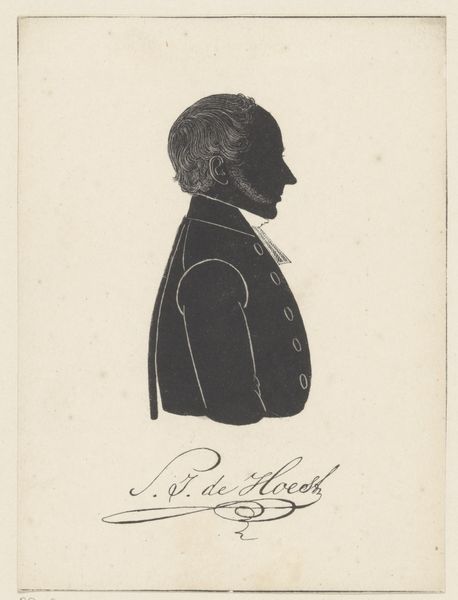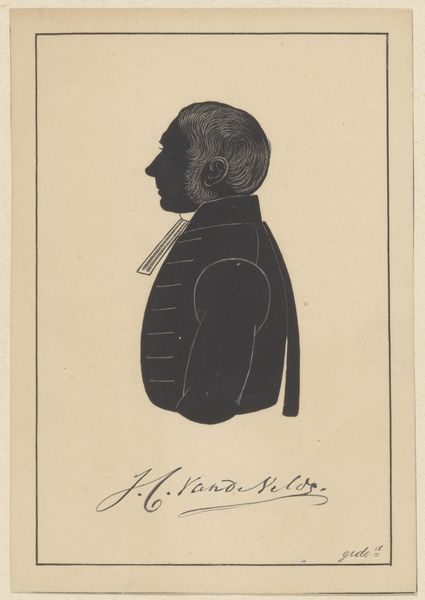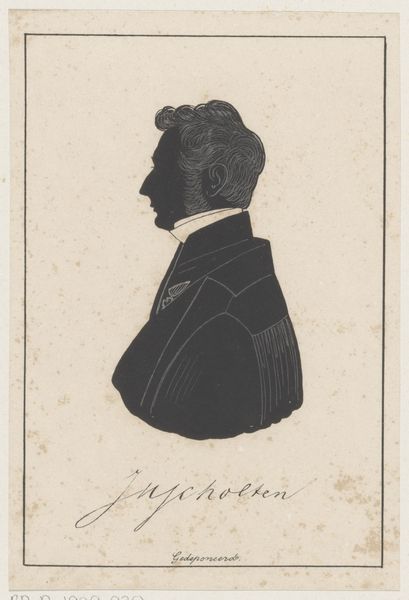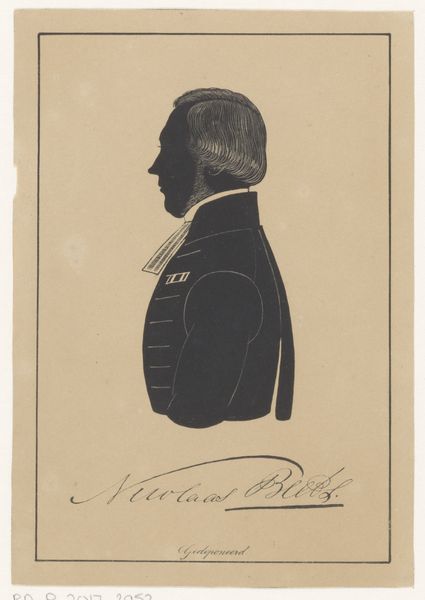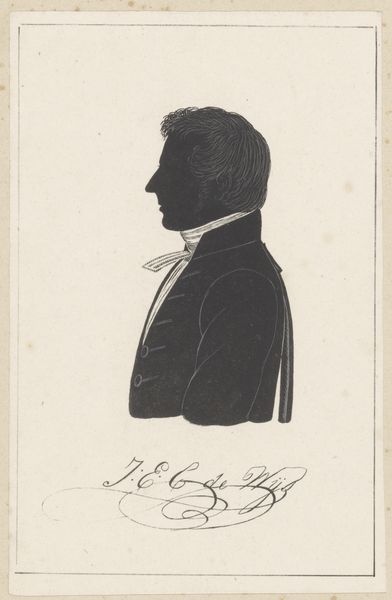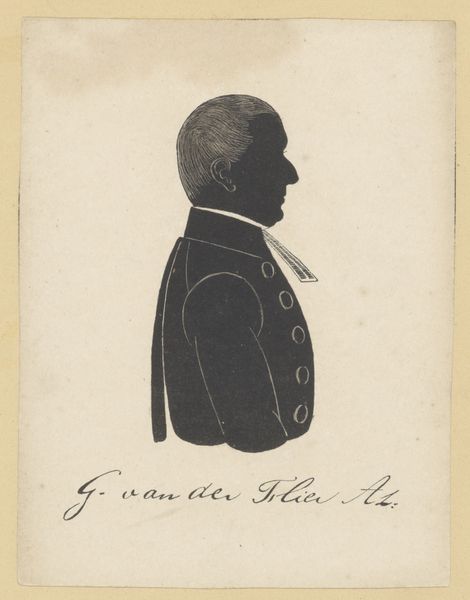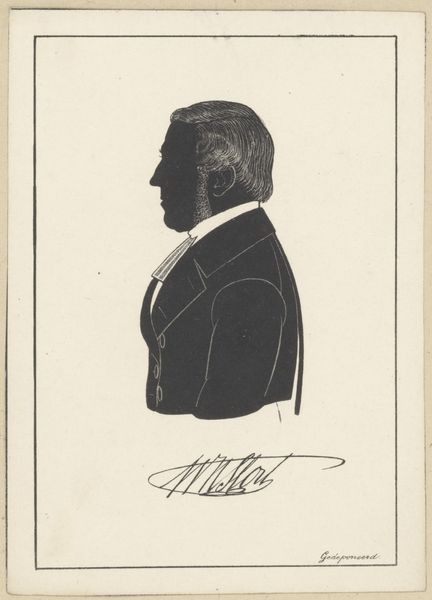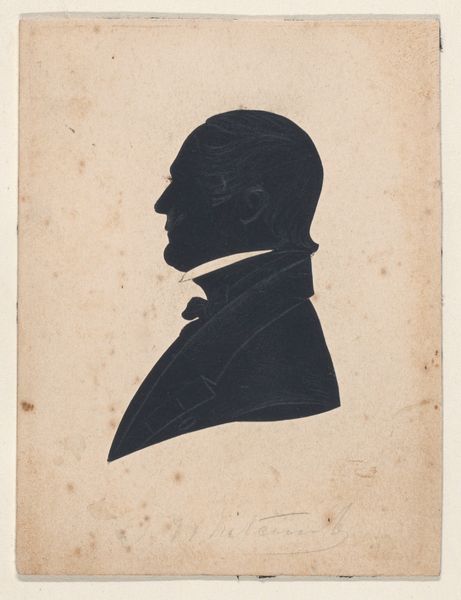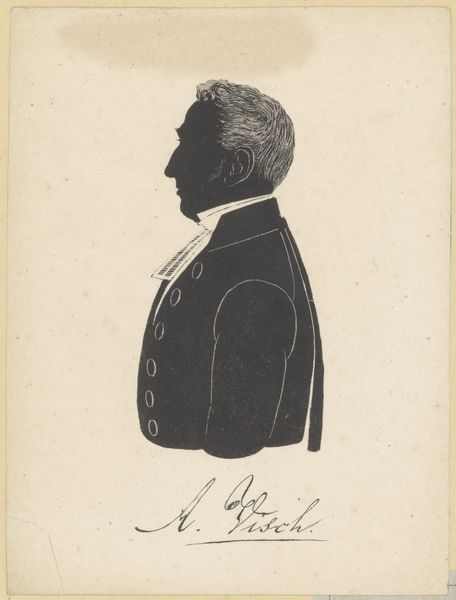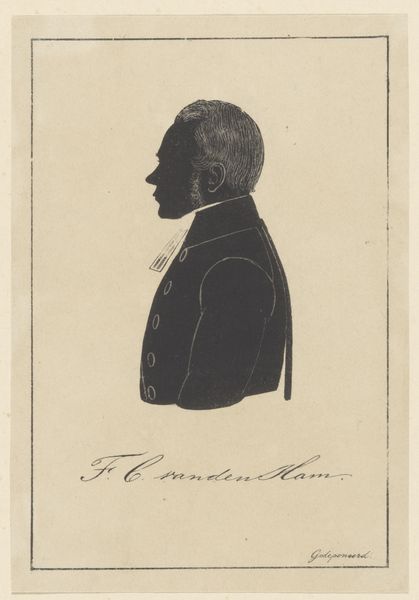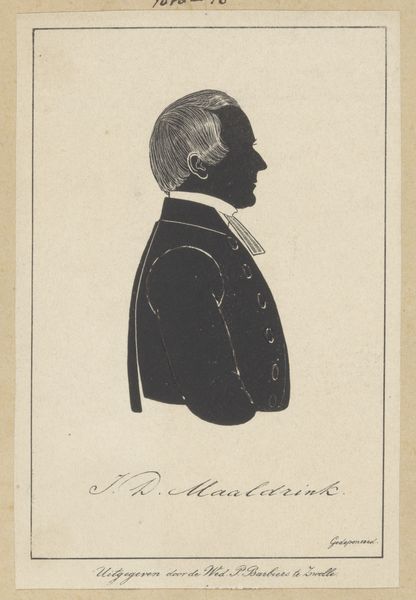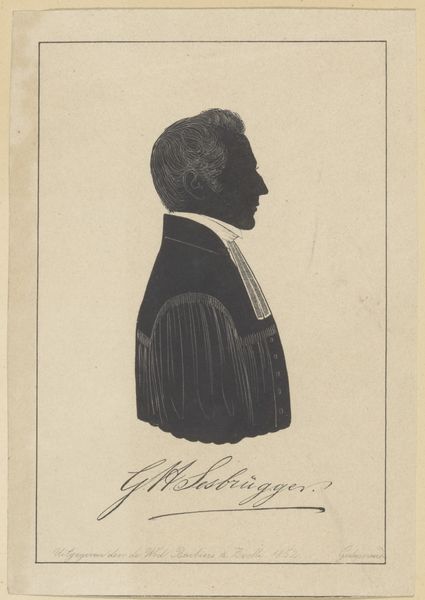
drawing, ink
#
portrait
#
drawing
#
neoclassicism
#
ink
#
academic-art
Dimensions: height 153 mm, width 108 mm
Copyright: Rijks Museum: Open Domain
Pieter Barbiers made this silhouette portrait of Frideman Hendrik Michelsen, using paper and scissors, sometime in the first half of the 19th century. Silhouettes were a popular and affordable form of portraiture at the time. The sitter’s attire suggests that he was a man of the cloth, most likely a protestant minister. But what does it mean to present a figure of social authority in such a democratic medium? The rise of silhouettes coincided with the rise of a European middle class that was eager to participate in cultural life but lacked the wealth of the aristocracy. Did new forms of portraiture like this threaten older social hierarchies or merely replicate them in new ways? To better understand the social meanings of this image, we might look at the history of portraiture, the changing structure of Dutch society in the 19th century, and the institutions that both shape and reflect it.
Comments
No comments
Be the first to comment and join the conversation on the ultimate creative platform.
